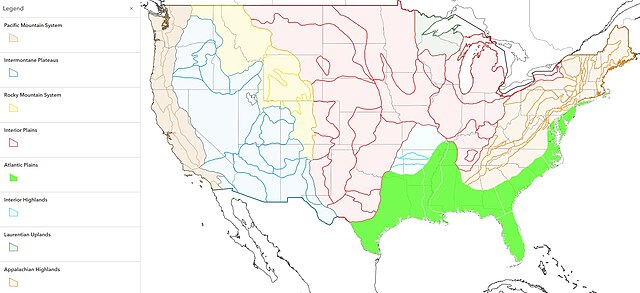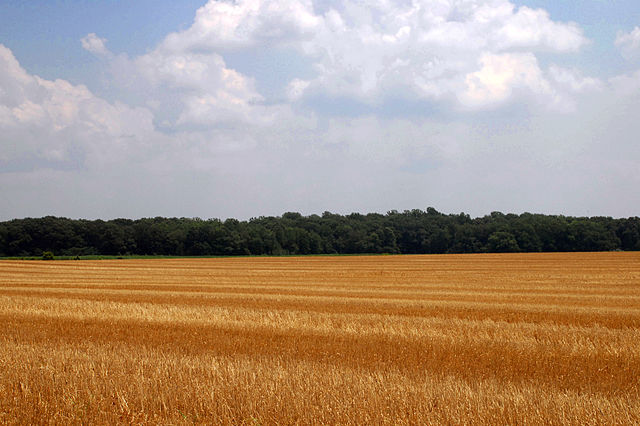The Atlantic Plain is one of eight distinct physiographic divisions of the contiguous United States. Using the USGS physiographic classification system, the Atlantic Plain division comprises two provinces and six sections. The Coastal Plain province is differentiated from the Continental Shelf province simply based on the portion of the land mass above and below sea level.
Atlantic Plain Physiographic Division of the United States. Green highlighted area is the Atlantic Plain, and the other seven physiographic divisions of the contiguous United States are shown in the legend.
Extent of the Atlantic Plain Continental Shelf province as indicated by the 1928 work by Fenneman.
Longleaf pine woodland savanna, typical of the region.
Wheat field near Centreville on the Eastern Shore of Maryland, with flat terrain typical of the Atlantic Plain
Physiographic regions of the United States
The physiographic regions of the contiguous United States comprise 8 divisions, 25 provinces, and 85 sections. The system dates to Nevin Fenneman's report Physiographic Divisions of the United States, published in 1916. The map was updated and republished by the Association of American Geographers in 1928. The map was adopted by the United States Geological Survey by publication in 1946.
The legend of paleogeological color also depicts topographic terrain.





